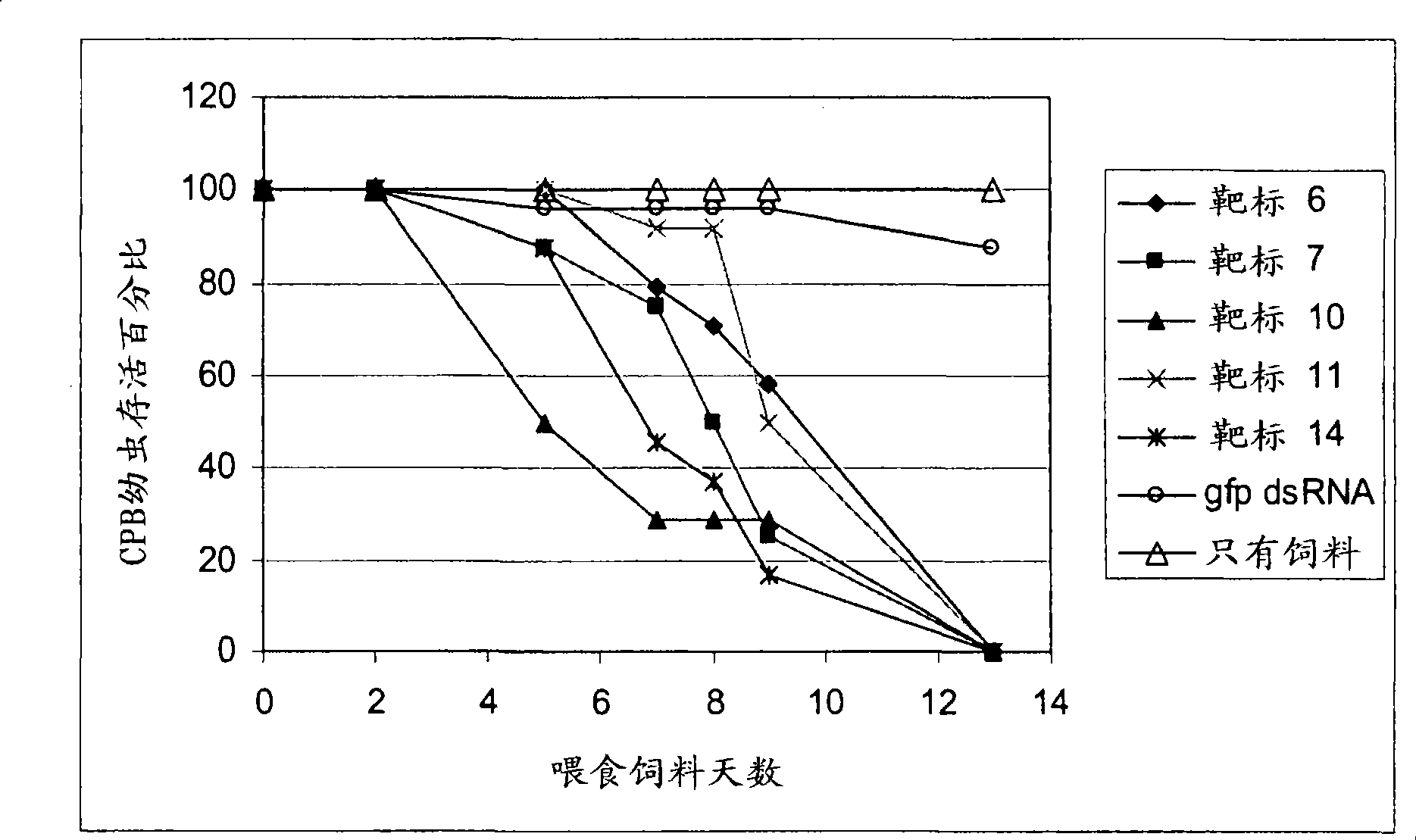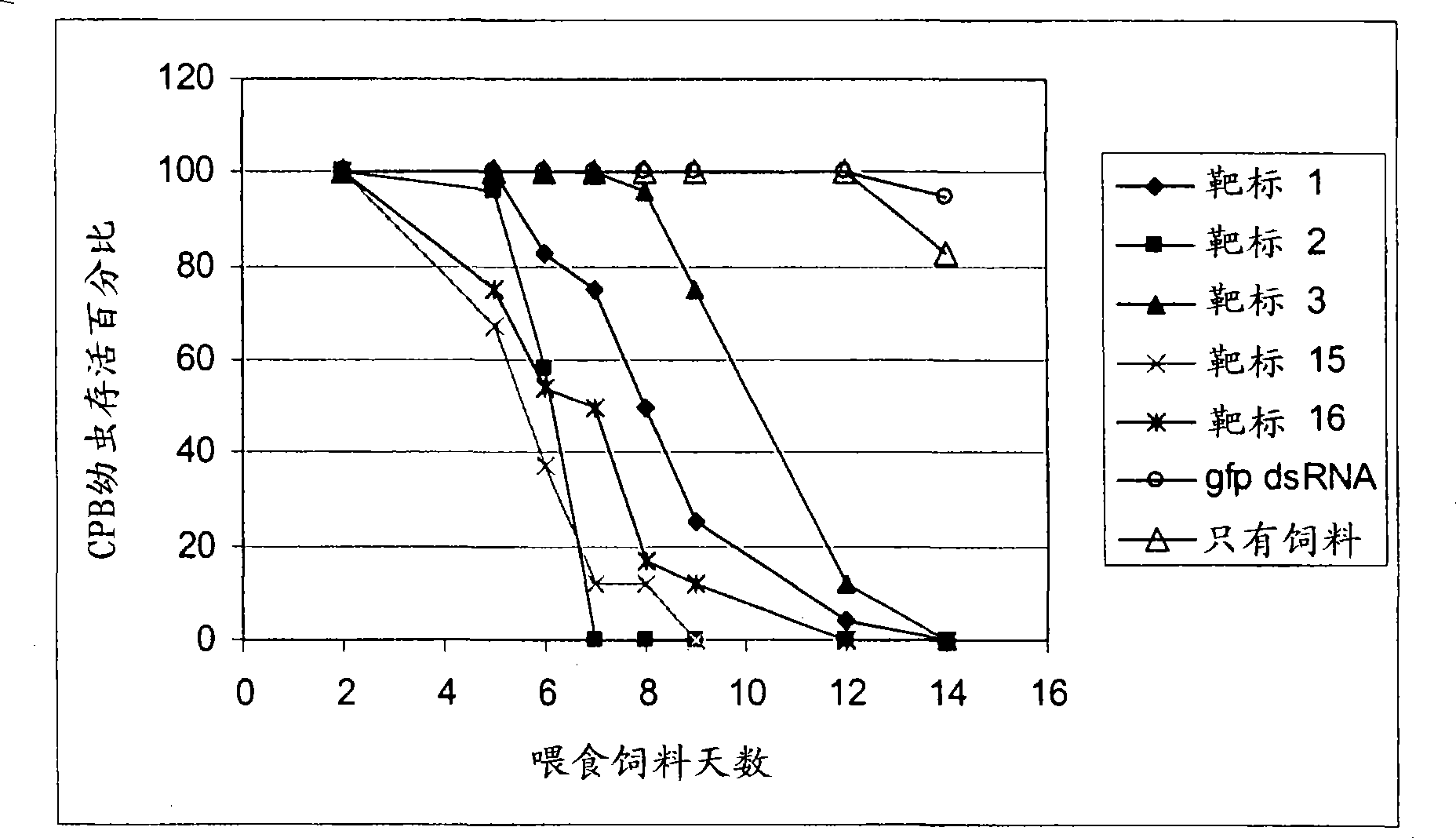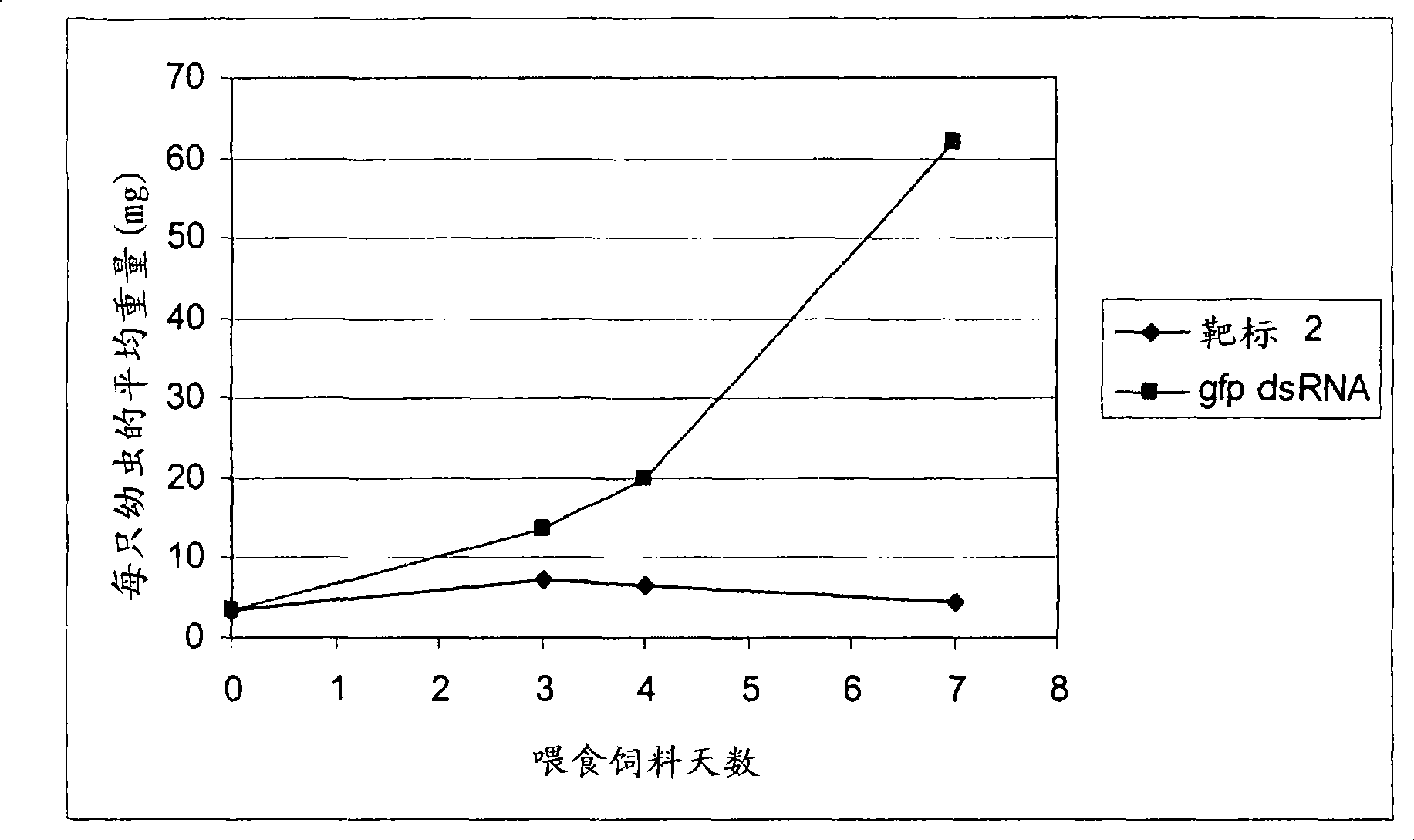dsRNA as insect control agent
A technology of insects and insecticides, applied in the direction of DNA/RNA fragments, recombinant DNA technology, cells modified by introducing foreign genetic material, etc., can solve the problem that RNAi down-regulates gene expression and knows little about it
- Summary
- Abstract
- Description
- Claims
- Application Information
AI Technical Summary
Problems solved by technology
Method used
Image
Examples
Embodiment 1
[0222] Example 1: Silencing of the Caenorhabditis elegans line in C. elegans in a high-throughput screen Insect target gene
[0223] The Caenorhabditis elegans genome wide library (WO 01 / 88121) was prepared between two identical T7 promoters and terminators in the pGN9A vector, which were induced by IPTG in the presence of T7 polymerase expression Drives its forward and reverse expression.
[0224] This library was transformed into bacterial strain AB301-105(DE3) in a 96-well plate format. For genome-wide screens, these bacterial cells were fed to a nuclease-deficient C. elegans nuc-1 (e1392) strain.
[0225] C. elegans nuc-1 (e1392) was fed dsRNA produced in bacterial strain AB301-105(DE3) to C. elegans nuc-1(e1392) in a 96-well plate format as follows: nuc-1 eggs were transferred to separate plates, and They were incubated simultaneously at 20°C to synchronize the L1 generation. Add 100 µl of liquid medium containing IPTG to a 96-well plate and add 10 µl of OD 600 1 ...
Embodiment 2
[0239] Example 2: Identification of D. melanogaster orthologs
[0240] As described in Example 1, a number of C. elegans lethal sequences were identified, which can be used to identify orthologs in other species. For example, the C. elegans lethal sequence can be used to identify orthologous D. melanogaster sequences. That is, each C. elegans sequence can be used to search public databases (eg GenBank) for its orthologue in Drosophila melanogaster. Select potential Drosophila melanogaster orthologs with a high degree of sequence homology (E value preferably less than or equal to 1E-30) that are blast mutual best hits (hits), the latter meaning from different organisms (e.g. Caenorhabditis elegans and Drosophila melanogaster) sequences were the top blast hits of each other. For example, sequence C from C. elegans was compared to the sequence in Drosophila melanogaster using BLAST. If sequence C has D. melanogaster sequence D as best hit, and D is also sequence C as best hi...
Embodiment 3
[0241] Embodiment 3: potato leaf beetle (Leptinotarsa decemlineata, Colorado potato beetle, CPB, Colorado potato leaf beetle)
[0242] A. Cloning the partial gene sequence from the potato leaf beetle
[0243] TRIzol reagent (Cat.Nr.15596-026 / 15596-018, Invitrogen, Rockville, Maryland, USA) isolated high-quality total RNA according to the instruction. Genomic DNA in the RNA preparation was removed by DNase (Cat. Nr. 1700, Promega) treatment according to the instructions. Using a commercially available kit (SuperScript TM III Reverse Transcriptase, Cat. Nr. 18080044, Invitrogen, Rockville, Maryland, USA) was used to generate cDNA according to the instructions.
[0244] In order to isolate the cDNA sequences comprising part of the LD001, LD002, LD003, LD006, LD007, LD010, LD011, LD014, LD015, LD016, LC018 and LD027 genes, a series of PCR reactions using degenerate primers were performed using the Amplitaq Gold ( Cat.Nr N8080240, Applied Biosystems) and carry out according ...
PUM
 Login to View More
Login to View More Abstract
Description
Claims
Application Information
 Login to View More
Login to View More - R&D
- Intellectual Property
- Life Sciences
- Materials
- Tech Scout
- Unparalleled Data Quality
- Higher Quality Content
- 60% Fewer Hallucinations
Browse by: Latest US Patents, China's latest patents, Technical Efficacy Thesaurus, Application Domain, Technology Topic, Popular Technical Reports.
© 2025 PatSnap. All rights reserved.Legal|Privacy policy|Modern Slavery Act Transparency Statement|Sitemap|About US| Contact US: help@patsnap.com



